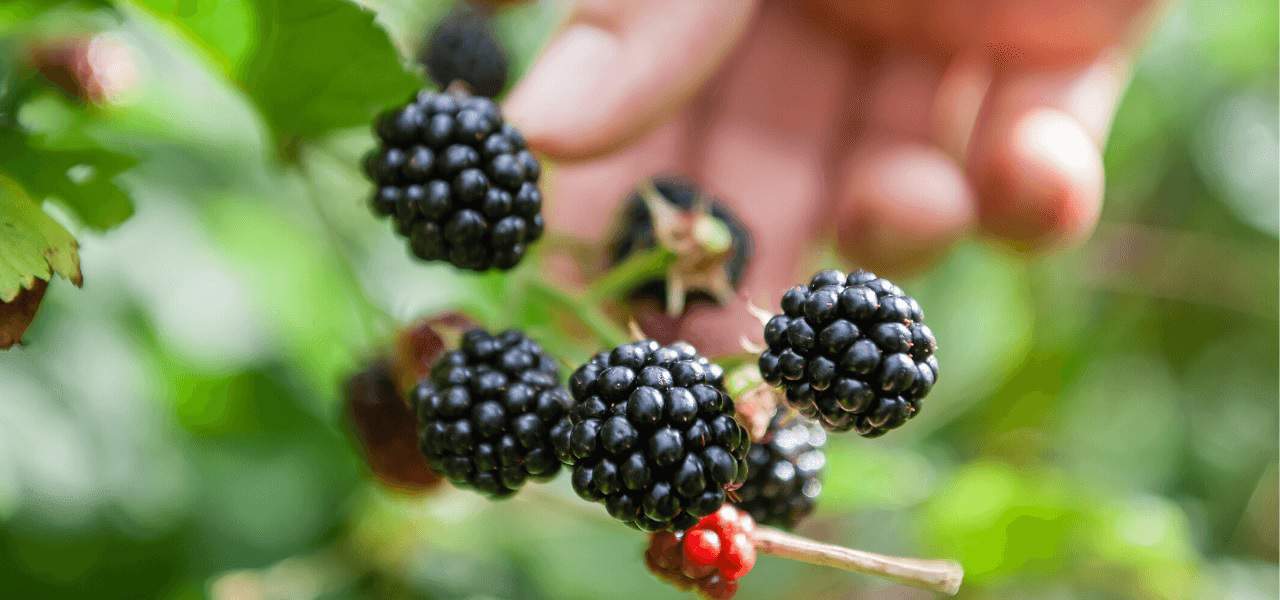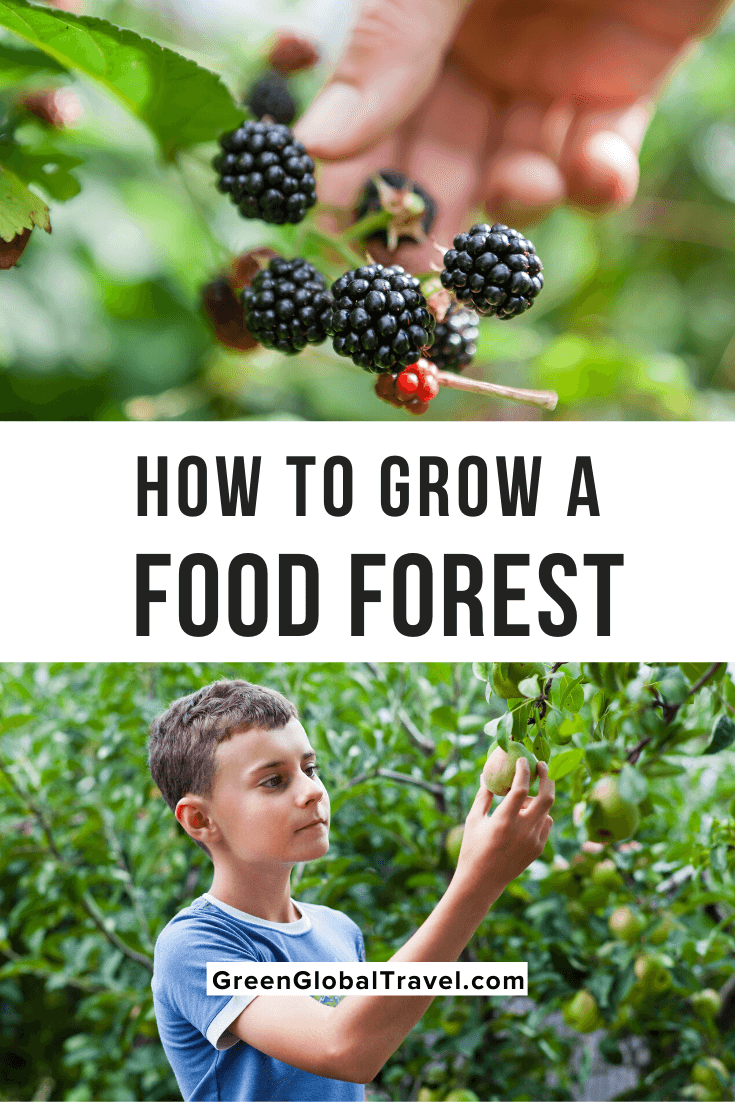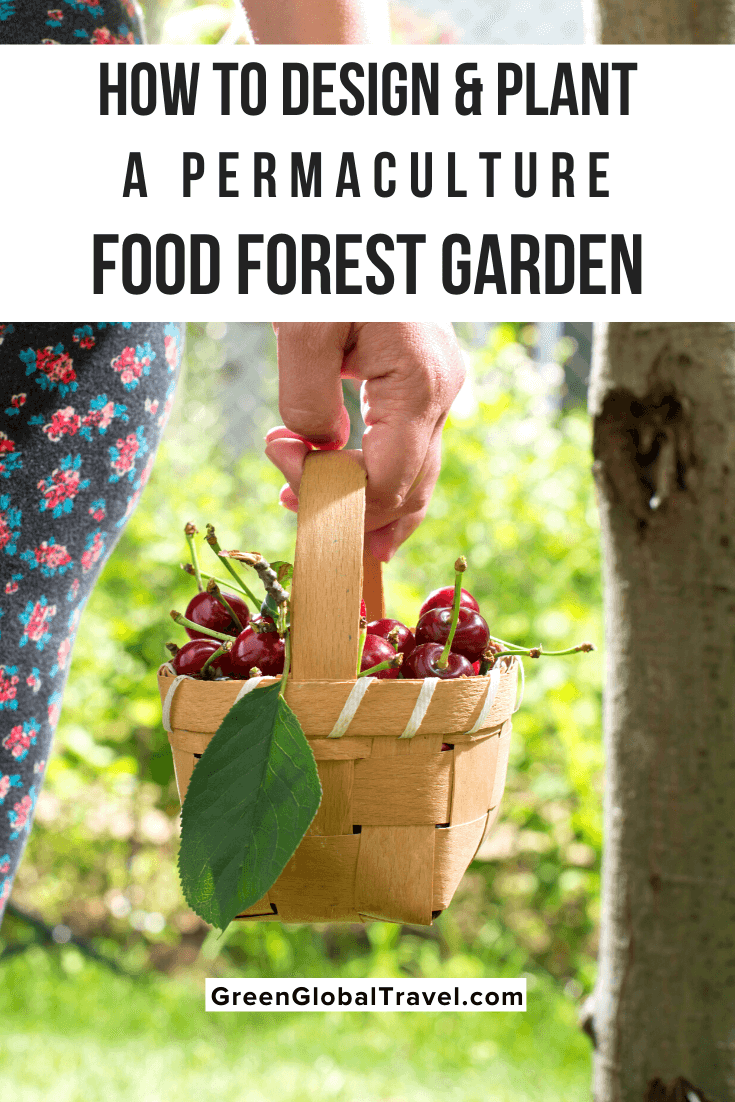[ad_1]
Permaculture is a system of designing our surroundings. It can include everything from how our home operates efficiently and how we sustainably acquire our energy to how we produce our own healthy organic foods.
It is this last item—growing food— for which the permaculture movement gets the most attention. But permaculture designs are about far more than just putting in raised garden beds, vertical gardening or organic gardening.
Permaculture garden designs strive to create miniature ecosystems with a mix of plants, as well as natural fertility, minimal irrigation, and easy access.
These gardens, while extremely productive, often look like a wild scattering of plants as opposed to the tidy rows of industrial agriculture.
In addition to crops, they often include water features, rockeries, stumperies, wild and domesticated animals, and humans as active parts of the ecosystem.
One major difference between conventional gardens and permaculture gardens is a focus on perennial vegetables over annuals.
While tomatoes, cucumbers, and other classics can be found in the permaculture garden, these plants are annuals. Because they grow to maturity in one season, they require much more care and fertility. Within the natural system, they are considered “takers.”
Perennials, on the other hand, are slow and steady, pacing themselves for years of production and consistently giving back to the earth. Some familiar examples of perennial vegetables are chives, garlic, rhubarb, asparagus, artichokes, and Turkish rocket (a type of arugula).
All that being said, the most significant and productive source of perennial food comes from trees. So the signature permaculture garden design really is the forest garden, or food forest.
Essentially, this is an edible forest in which the trees– the main source of production– and other plants have been picked for their ability to both provide food and fulfill the different roles of the different plants in a natural forest environment.
Read on to learn more about what a food forest is, the essential elements it should contain, and how to plan and design your own!
READ MORE: What is Permaculture Gardening? (Intro to Design & Principles)
Why a Food Forest Is the Ideal Garden
To imagine the ideal permaculture food forest, think of Eden. Here, a walk through the woods is filled with fruit, nuts, and— if we’re being honest—possibly even a snake.
Another way to think of it is to imagine a forest in which nearly every plant provides something for the kitchen table. In permaculture, food forest designs offer numerous benefits:
High Production
An average tomato plant provides about 20 pounds of food at best. An average semi-dwarf apple tree might be closer to 200 pounds.
In food forests, we might have both apple trees and tomato plants, as well as dozens of other plants. But the main idea to remember is that one tree provides MUCH more food than a plant.
Longevity
In addition to providing more food per plant, forest gardens and perennial systems have longevity.
We plant and foster the seedlings once, and they provide for years (possibly decades).
A blackberry bush may only produce the same weight in food as a tomato plant, but it will do so year after year after year instead of just once.
Low Maintenance Via Cooperation
Food forest designs include a blend of plants, all of which fulfill specific functions.
Trees help with water cycles, stability, and mulch. Some shrubs repel/confuse pests, flowering plants entice pollinators, and legumes improve soil fertility.
They work together like a forest ecosystem that takes care of itself. We interfere here and there so the forest gives us more of what we want– fruit, nuts, vegetables, etc.
Biodiverse Ecosystem for Wildlife
Unlike standard vegetable plots or orchards, a food forest works on behalf of wildlife.
It’s a system of diversity rather than monoculture, so it doesn’t require constant fertilizer or pesticides.
Instead, the plants and animals of the forest help each other, with each one valued for its contribution. Animals spread seeds, fertilize soil, pollinate fruit, till earth, and much more.
Aesthetic Appeal
Cartons at the supermarket may show us tidy farms with well-groomed rows, but nature doesn’t work this way. Nature’s beauty is much more… well, natural.
In the food forest, something different is always blooming, the underbrush comes in seasonal waves, and animals flitter about.
A backyard food forest is a much more inherently beautiful picture than a heavily tilled field that has been doused in chemicals.
This list could go on. We haven’t gotten into soil fertility, or water cycles, or oxygen, or sustainability or the many other amazing things that forests bestow. In simple terms, they are bastions of the planet, and a food forest garden is a cornucopia for humanity.
READ MORE: Growing Food in Small Spaces (Container & Vertical Gardens)
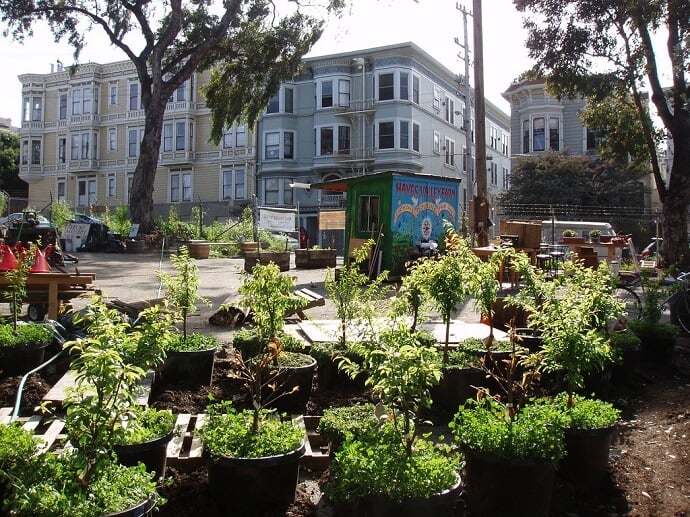
Understanding the Parts of a Food Forest
Permaculture food forest design is based on observing the ecology of real forests and mimicking it with food-producing species.
Though we typically associate forests with trees, the fact is that there is much more going on than that. There are recurring layers of growth evident in just about every type of forest:
Overstory
Overstory trees are those that reach the highest, creating a canopy over much of the forest.
These include oaks and maples, which can also be grown for food products– acorns and maple syrup. Other edible options would include chestnuts, pecans, walnut, and butternut (a.k.a. white walnut).
These trees generally surpass the 50-foot mark, so they might not be suitable for all suburban food forests.
Understory
Understory trees are shorter, filling in the spaces between large trees.
In terms of food forests, this is where the fruit trees nestle (particularly semi-dwarf varieties, which are increasingly common).
There are also nut trees that fit into this slot, such as hazelnut, chinquapins, and almonds. Small, possibly productive nitrogen-fixing trees (we’ll get to that in a minute) are a big component here as well.
Shrubs
Shrubs are the next layer. Like trees, they have woody stems, but with multiple stems coming out of the ground. They can be up to 13 feet tall, but their stems are smaller in diameter.
They include plants such as forsythia, roses, lavender, and rosemary, all of which are edible and medicinal. There are also a host of berries in this category.
Most are shade-tolerant and/or grown at the edges of forests, where they can get sunlight.
Herbaceous Plants
Herbaceous plants tend to be smaller than shrubs, but don’t have wooden stems.
Vegetable garden versions include tomatoes, peppers, corn, parsley, dill, and so on. There are also herbaceous weeds, such as garlic mustard (delicious edible), dandelion (delicious edible), and nettle (delicious edible).
For a food forest, the goal would be to include herbaceous plants that don’t require much care or space to thrive.
Groundcovers
As their name implies, these plants specialize in covering the ground. This protects the soil from drying out, eroding, etc.
These include clover (edible), strawberries, and “creeping” herbs. These will pop up along forest edges, or in spots where the sun reaches the forest floor.
Bulbs/Roots/Rhizomes
While most plants have bulbs, roots, or rhizomes, some plants are champions of them, including carrots, potatoes, and beets.
But there other plants with great surprises that dwell underground. For example, ginger and turmeric both have rhizomes (or underground stems) that we use in our food.
Plants from the allium family, such as garlic and onions, have edible bulbs. Jerusalem artichoke, groundnut, and peanuts also have edible parts beneath the surface.
Vines & Climbers
Vines and climbers are yet another layer to the extended forest family. They can wind their way along the ground, such as pumpkins do, or they can get vertical like wild grapes or hops.
We also have vines that are notoriously invasive, such kudzu (which are edible and highly nutritious), which have the ability to cause some serious systemic alterations in a forest.
Fungi
Though not a plant, fungi are an integral part of what’s going on in any forest.
Mushrooms help to complete the life cycle of wood materials from fallen trees and feed them to growing trees. An old permaculture edict is that a new forest grows on an old one, and fungi are the key to it.
Plus, there are great edible mushrooms to be included within the list of forest garden products, and they can be cultivated in the shade of our established trees.
What’s vital to take away from this list of layers is that there are multitudes of things growing in the forest besides trees. If we’re creating a forest garden, we need to account to some degree for all these different levels. They are what make a forest a forest, and add so much more food production to the space.
READ MORE: How to Grow Mushrooms at Home (A Step by Step DIY Guide)
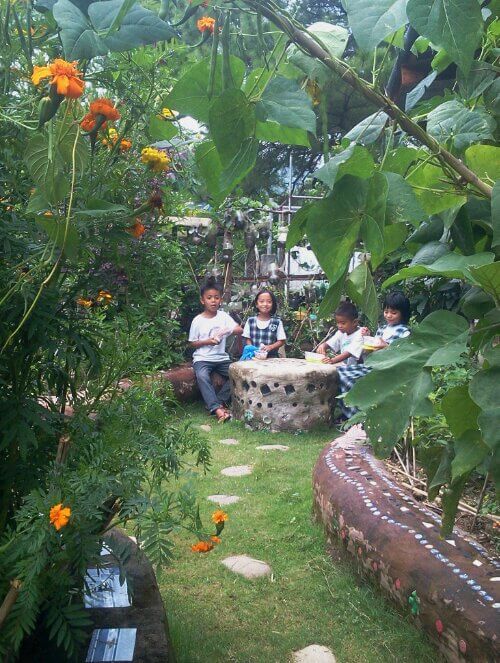
Planting with Time, Space & Function in Mind
Because we are the designers of our permaculture forest, we have the opportunity (and obligation) to choose our plants wisely.
We need to space them with adequate room to grow, and occasionally alter to the system to keep it productive.
We should create groups (known as guilds) that work well together, providing all the different functional roles happening in a forest system.
We can even think about where the forest might be in a year’s time (or three years, or two decades), and consider the life cycles of place and how they might fit together.
Nitrogen-Fixers
Nitrogen-fixers are the renewable fuel that makes the food forest grow.
Some plants have the ability to take nitrogen from the air and put it into the soil. Nitrogen is the heart of most fertilizers, including organic options like manure and compost.
There are nitrogen-fixers of all shapes and sizes. Black locust trees (edible flowers, great fencing timber) are huge, and they fix nitrogen into the soil.
Clover is tiny, and it fixes nitrogen into the soil. Goumi berry shrubs have delicious fruit, and they fix nitrogen into the soil. Beans and peas of all sorts are nitrogen-fixers.
Nitrogen-fixing plants should play a big role when a starting food forest (about 90% of what’s planted), and they should be slowly phased out as productive trees finally come into their own.
Function
In a fruit forest or food forest, the main objective is to acquire a crop. However, unlike orchards, these are ecosystems. And within ecosystems, individual plants have specific roles to play.
Nitrogen-fixers fertilize, but we also have aromatic plants for pest control, flowery plants for pollinators, and ground covers for soil protection.
Trees provide habitat, shelter, stability, leaf litter, flood mitigation, wind suppression, and much more. Many plants perform multiple functions.
We should be aware of what roles the food forest plants we choose are meant to play, including what they will be providing us with.
Mature Size
Size is an important concept when piecing together a food forest. While it’s true that two huge oak trees may grow right next to each other, this isn’t the model for bushy, productive trees.
Luckily, we have information about how big trees get and how fast they grow. So we can think carefully about spacing them adequately to ensure they can fully realize their potential and not just race to see who gets highest the fastest.
This is important because, once they are fully grown, they can’t be moved. Give them room to breathe and fill the spaces in between with the lower layers.
In other words, make sure to leave avenues for the sun to reach everywhere in the forest.
Phase-outs
Natural forests go through predictable secessions, with pioneer plants (typically nitrogen-fixers and fast-growing stuff, which are classically called “invasives”) paving the way for the long-standing species that will become the forest canopy.
While 90% of a beginning food forest should be nitrogen-fixers, that number should reverse to 90% productive trees when the forest matures.
This means the nitrogen-fixers are being heavily pruned and cut down to feed the forest around them, and that makes the permaculture forest develop much faster than a natural one would.
Instead of allowing a slow natural progression of dominant plants, we start them all at once and regulate the situation.
Edible Edges
These areas are going to be a great source of production in the food forest.
Lots of herbaceous plants and woody shrubs like to hang out at the outer edges of forests, where they can soak up plenty of sun. This is where we can put prize edibles like berries.
We can also create more “edge effect” by spacing our trees appropriately and planting in the gaps between them. We can even create even more micro versions of this by adding small rockeries and stumperies within the food forest.
The edges around them, you’ll notice, seem particularly fertile and active, a la fence lines or garden borders.
Water
Water is necessary for our forest, particularly in arid climates. Having a dense forest cover helps with retaining moisture because it keeps the sun from evaporating it all.
That being said, areas with bare soil should be covered with mulch, and possibly cultivated with some sort of plant. It’s prime real estate.
You can also use water conservation methods and harvesting features, such as mulch pits (an excavated hole filled with organic waste), swales (which are installed before planting anything), and small ponds or dams. Gray water is great for food forest gardens.
READ MORE: How to Make a DIY Rainwater Harvesting System
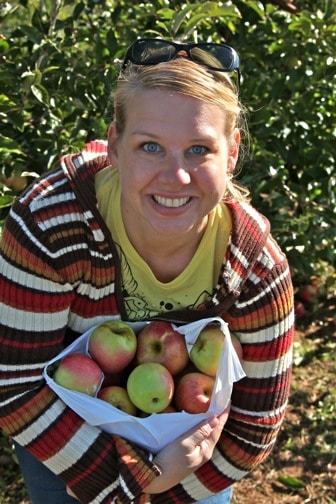
Planting a forest garden is for food now, but also for generations to come.
These aren’t like vegetable plots. They persist for decades, and have the ability to continually regenerate themselves if left unfettered by human hands.
Once established, they don’t need much in the way of human intervention.
Nevertheless, as the grower, we do spend some time pruning, harvesting, and monitoring our edible food forest to keep them as productive as possible. After all, we are growing dinner here!
READ MORE: What is Aquaponics? (The Ultimate DIY Beginner’s Guide)

List of Food Forest Plants
To help with deciding which plants might work for your food forest, here are some notable plants that fit the climate where I live on the North Carolina/Virginia border (USDA Zone 7a):
Productive Trees
- Pecan, butternut, walnut, chestnut, oak (acorns), hickory (nuts)
- Apple, pear, peach, plum, nectarine, cherry, fig, pawpaw
Nitrogen-Fixers
- Locusts, Japanese pagoda tree
- Mimosa, goumi (and many of the Elaeagnus family), alder, sea buckthorn, buffaloberry
- Licorice, vetch, indigo,
- Groundnut, scarlet runner bean, wisteria
- Red & white clover
Pests & Pollinators
- Basically, anything with a flower, but early- and late- blooming species are particularly prized because they provide pollen when it’s harder to come by.
- Garlic, horseradish, and daffodils are good for thwarting underground assaults.
- Rosemary, lavender, mint, sage, dill, and other culinary herbs are great for confusing air attacks, as well as drawing in pollinators.
Other Useful Plants
- Dynamic accumulators are great for pulling out lots of nutrients from the soil, then being cut down and laid on the soil (a.k.a. “chop and drop”) for other plants to get those nutrients: comfrey, chamomile, chicory, nettle, sorrel, tobacco, borage, etc.
- Berries
While our growing climate might not perfectly match those in, say, Michigan to the north or Louisiana to the south, the internet will definitely provide more info on the plants that are best for your zone. –Jonathon Engels; lead photo by chulmin 1700 courtesy of Pixabay
[ad_2]
